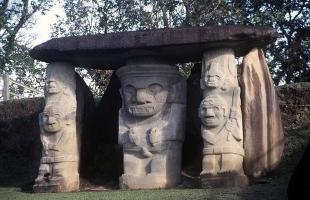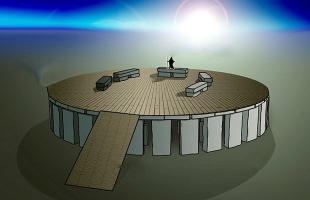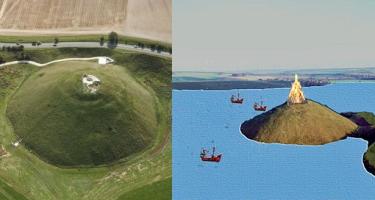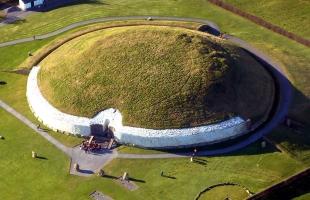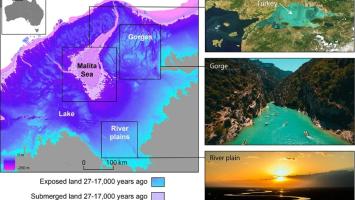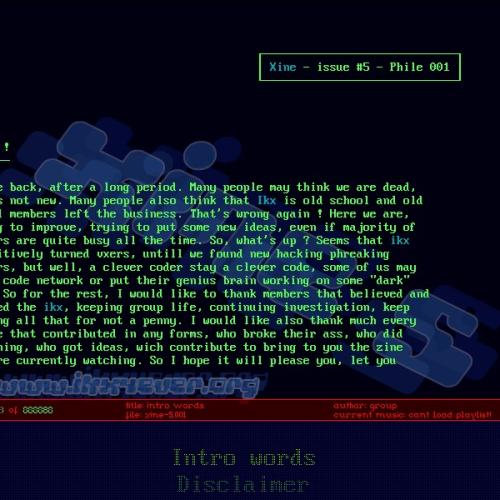Copy Link
Add to Bookmark
Report
Going Ape Shit Press 025

going ape shit press #25 by pip the angry youth
hey, ace has nothing on me... here's a complete report on richard
milhous nixon... ta dow!
===-===-===-===-===-===-===-===-===-===-===-===-===-===-===-===-===-===-===-===
dickie nixon
Richard Milhous Nixon was the 37th president of the United States
(1969-74). During his administration the United States withdrew
its military forces from Vietnam and informally recognized the
government of the People's Republic of China. The Watergate
scandal that occurred at the beginning of his second term brought
Nixon to the verge of impeachment by the House of Representatives
and led to his resignation, the first ever by a U. S. president.
Born in Yorba Linda, Calif., on Jan. 9, 1913, Nixon was the
second of Hannah and Francis Nixon's five children, all of whom
were boys. Despite the economic difficulties and emotional
tensions of the Nixon household, young Richard excelled in
school, graduating second in his class from Whittier College
(1934) and third in his class from Duke University law school
(1937). From 1937 to 1942 he practiced law in Whittier, Calif.
When the United States entered World War II, he worked briefly
for the tire-rationing section of the Office of Price
Administration in Washington, D.C., and then served in the navy
as a supply officer in the South Pacific.
Upon his return to Whittier after the war he entered politics,
becoming the Republican candidate for Congress in California's
12th district. His first political campaign, in 1946, set the
tone for many that would follow. Running against the liberal
Democratic incumbent, Jerry Voorhis, Nixon suggested that Voorhis
had dangerous left-wing tendencies. Nixon won easily and
thereafter made anti-Communism one of his main political themes.
As a new congressman he was assigned to the then relatively
unimportant House Committee on Un-American Activities. He
quickly attained national prominence by playing a central role in
the committee's investigation of Alger HISS, a former high State
Department official accused of carrying on espionage for the USSR
during the 1930s. Nixon was reelected to the House in 1948. In
1950 he ran for the Senate, defeating the Democratic candidate,
Congresswoman Helen Gahagan Douglas, against whom he leveled
charges not unlike those he had used to unseat Voorhis 4 years
earlier. When he entered the Senate, he was regarded as one of
the brightest young stars of the Republican party. His youth, his
oratorical skills, and his indefatigable speechmaking at
Republican fund-raising dinners around the country won him favor
among local party organizers. In 1952, at the age of 39, he was
nominated by the party to be Dwight D. Eisenhower's
vice-presidential running mate.
During the 1952 presidential campaign, Eisenhower adopted a
statesmanlike pose, whereas Nixon once again employed the
blistering anti-Communist language that had helped him gain
national prominence. Midway in the campaign, however, he was
nearly dropped from the ticket. Stories appeared in the press of
an $18,000 fund that had been raised for Nixon by California
businessmen. Nixon defended himself in a nationwide radio and
television speech, denying that there was anything improper in
his use of the money. His wife did not wear mink, he pointed
out, but only "a respectable Republican cloth coat." The only
gift that he had kept for himself was a cocker spaniel named
Checkers. The "Checkers speech" brought an overwhelmingly
favorable response from Republicans across the nation. Eisenhower
kept him on the ticket, and the two were swept into office by a
margin of more than 6 million votes over the Democratic ticket
headed by Gov. Adlai E. Stevenson of Illinois.
As vice-president, Nixon was never personally very close to
Eisenhower, although he frequently represented the president at
home and abroad. In 1955, when Eisenhower suffered a heart
attack, Nixon filled in effectively for him until the president
could resume his duties. The Eisenhower-Nixon ticket was
reelected by another landslide in 1956. In the next few years
Nixon traveled widely; in one trip to the USSR in 1959 he opened
the American National Exhibition. There, in a model kitchen, he
engaged in a debate with Nikita Khrushchev. This widely
publicized "kitchen debate" enhanced Nixon's political stature.
His yeoman service to the party made Nixon the logical Republican
choice to run for president in 1960. Campaigning against the
Democratic nominee, John F. Kennedy, Nixon seemed to come off
second best in a series of television debates with his
lesser-known opponent. He lost the election by a little more
than 100,000 votes. Two years later, when he was defeated for
the governorship of California by the Democratic incumbent,
Edmund G. ("Pat") Brown, many observers thought Nixon's political
career had ended. He himself told reporters the next day, "You
won't have Nixon to kick around anymore, because, gentlemen, this
is my last press conference."
In the next few years he worked as a partner in a New York law
firm and traveled the country and the world. The nomination and
overwhelming defeat of Sen. Barry Goldwater as the Republican
presidential candidate in 1964 encouraged Nixon to try again for
the presidency in 1968. He obtained the nomination on the first
ballot after winning a series of presidential primaries. This
time, partly because the Democratic party was bitterly divided
over the VIETNAM WAR, Nixon won the election, despite an
11th-hour surge by the Democratic nominee, Hubert H. Humphrey,
that narrowed Nixon's final margin to less than 1% of the popular
vote.
In the White House, the contradictions in Nixon were most
obvious. He could be bold, yet also cautious; effective, yet
often inept. Working closely with his national security advisor
(later, secretary of state), Henry Kissinger, he forsook the
anti-Communist policies that he had supported throughout most of
his career in favor of detente with the USSR and rapprochement
with the Communist government of China. In 1969 he began the
Strategic Arms Limitation Talks (SALT) with the Soviet Union. In
February 1972 he made a historic trip to Peking--where he was
received by Mao Tse-tung--thus reversing the U.S. policy of not
recognizing the Communist government. In 1973, after 4 years of
waging war in Vietnam--including heavy bombing raids on North
Vietnam (1972) and the invasion (1970) of Cambodia--the
administration managed to arrange a cease-fire that would last
long enough to permit U.S. withdrawal from the Indochinese war
zone. After the Arab-Israel War in 1973, the efforts of Henry
Kissinger led to a cease-fire and troop disengagement in the
Middle East.
Domestically, under the banner of "A New Federalism," Nixon
attempted to shift important elements of governmental power and
responsibility back to state and local governments. He cut back
and opposed federal welfare services, proposed antibusing
legislation, and used wage-and-price controls to fight
inflation. A combination of domestic and international
developments, notably the quintupling of oil prices by the
Organization of Petroleum Exporting Countries (OPEC) in 1973, led
to the economic recession of 1974-75.
In 1972, Nixon swept to an overwhelming victory in the
presidential election against his Democratic challenger Sen.
George S. McGovern--but, ironically, the seeds of political
collapse had already been sown. During the campaign, a group of
burglars working for the Committee to Re-elect the President
broke into the headquarters of the Democratic National Committee
at the Watergate office-apartment complex in Washington, D.C.,
apparently in search of political intelligence. Attempts by the
White House to stop or frustrate the ensuing investigations
ultimately failed when Nixon's own White House tape recordings
revealed that the president and his assistants had engaged in an
obstruction of justice.
In the meantime he had been forced to drop Vice-President Spiro
T. AGNEW, who resigned in October 1973 after he was charged with
corruption that began during his tenure as county executive of
Baltimore, Md. As the revelations of wrongdoing piled up, Nixon
became preoccupied with preserving his presidency. He jettisoned
top assistants in the White House and fired Special Prosecutor
Archibald COX. After the Supreme Court, in a unanimous decision,
required that he supply Cox's successor, Leon Jaworski, with tape
recordings of conversations with his advisors, the House
Judiciary Committee voted to recommend (July 27-30, 1974)
approval by the full House of three articles of impeachment
against the president. On Aug. 9, 1974, Nixon resigned his
office and was succeeded by Vice-President Gerald R. FORD, whom
he had selected to replace Agnew. A month after Nixon's
resignation, Ford pardoned him for any crimes he might have
committed as president. Nixon accepted the pardon but insisted
that his mistakes had been personal and political, not criminal.
After retiring to San Clemente, Calif., Nixon moved to New York
City, then to Saddle River, N.J. In 1981 he joined former
presidents Ford and Carter as members of the official U.S.
delegation to the funeral of Egyptian president Anwar al-Sadat.
Nixon's writings include three autobiographical works, Six Crises
(1962), RN: The Memoirs of Richard Nixon (1978), and In the Arena
(1990), and books on U. S. foreign policy--The Real War (1980),
Real Peace (1984), No More Vietnams (1985), 1999: Victory without
War (1988), and Seize the Moment: America's Challenge in a
One-Superpower World (1992).
Stanley W.
Cloud
Bibliography: Ambrose, Stephen, Nixon: The Education of a
Politician (1987) and Nixon: The Triumph of a Politician
(1989); Brodie, Fawn M., Richard Nixon: The Shaping of His
Character (1981; repr. 1983); Drew, Elizabeth, Washington
Journal: A Diary of the Events of 1973-74 (1975); Evans,
Rowland, Jr., and Novak, Robert, Nixon in the White House: The
Frustration of Power (1971); Kutler, Stanley I., The Wars of
Watergate: The Last Crisis of Richard Nixon (1990); Mazo, Earl,
and Hess, Stephen, Nixon: A Political Portrait (1968); Morris,
Roger, Richard Milhous Nixon (1989); Oudes, Bruce, ed., From The
President (1989); Parmet, Herbert S., Richard Nixon and His
America (1990); Reichley, A. J., Conservatives in an Age of
Change: The Nixon and Ford Administrations (1981); Sulzberger,
C. L., The World and Richard Nixon (1987); Szulc, Tad, The
Illusion of Peace: A Diplomatic History of the Nixon Years
(1978); White, Theodore H., Breach of Faith (1975) and The Making
of the President, 1968 (1969); Wicker, Tom, One of Us: Richard
Nixon and the American Dream (1991); Wills, Garry, Nixon
Agonistes, rev. ed. (1979); Witcover, Jules, The Resurrection
of Richard Nixon (1970); Woodward, Bob, and Bernstein, Carl, All
the President's Men (1975).
People involved with Nixon
Richard Milhous Nixon
37th President of the United States (1969-74)
Born:
Jan. 9, 1913, Yorba Linda, Calif.
Education:
Whittier College (graduated 1934);
Duke University Law School (LL.
B., 1937)
Profession:
Lawyer, Public Official
Religious Affiliation:
Society of Friends (Quaker)
Marriage:
June 21, 1940, to Thelma Catherine "Pat" Ryan (1912-) Children:
Patricia Nixon (1946- );
Julie Nixon (1948- )
Political Affiliation:
Republican
Vice-President:
Spiro T. Agnew (1969-73);
Gerald R. Ford (1973-74)
Cabinet Members:
Secretary of State:
William P. Rogers (1969-73);
Henry A. Kissinger (1973-74) Secretary of the Treasury: David
M. Kennedy (1969-70);
John B. Connally, Jr.
(1971-72);
George P. Shultz (1972-74);
William E. Simon (1974) Secretary of Defense: Melvin R. Laird
(1969-72);
Elliot L. Richardson (1973);
James R. Schlesinger (1973-74) Attorney General: John N.
Mitchell (1969-72);
Richard G. Kleindienst
(1972-73);
Elliot L. Richardson (1973);
William B. Saxbe (1974) Postmaster General: Winton M. Blount
(1969-71) Secretary of the
Interior: Walter J. Hickel
(1969-70);
Rogers C. B. Morton (1971-74) Secretary of Agriculture:
Clifford M. Hardin (1969-71);
Earl L. Butz (1971-74) Secretary of Commerce: Maurice H. Stans
(1969-72);
Peter G. Peterson (1972);
Frederick B. Dent (1973-74) Secretary of Labor: George P.
Schultz (1969-70);
James D. Hodgson (1970-72);
Peter J. Brennan (1973-74) Secretary of Health, Education, and
Welfare: Robert H. Finch
(1969-70);
Elliot L. Richardson (1970-73);
Caspar W. Weinberger (1973-74) Secretary of Housing and Urban
Development: George W. Romney
(1969-72);
James T. Lynn (1973-74) Secretary of Transportation: John A.
Volpe (1969-73);
Claude S. Brinegar (1973-74)
===-===-===-===-===-===-===-===-===-===-===-===-===-===-===-===-===-===-===-===
bam! just like old times eh? remember the reports in tho?











